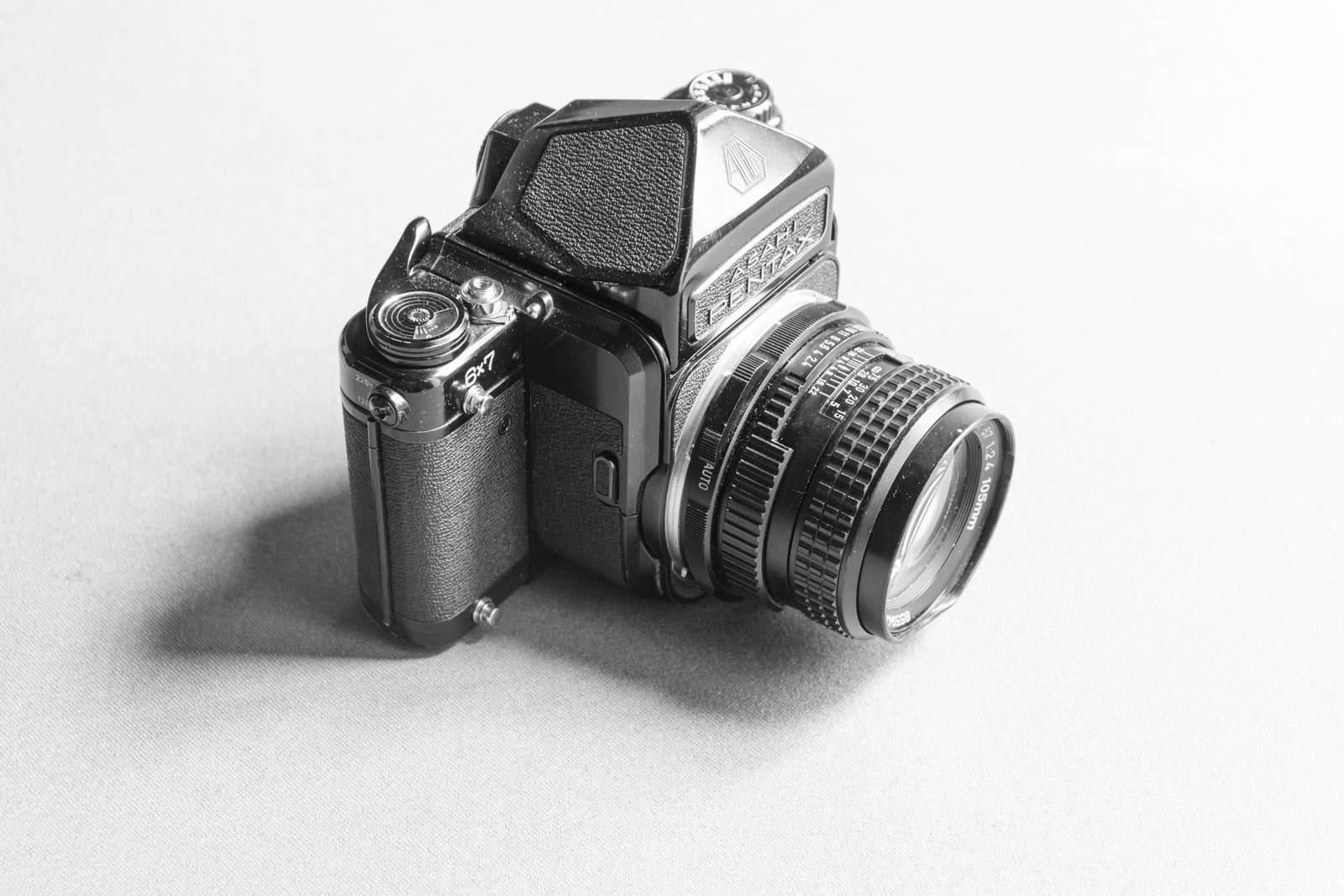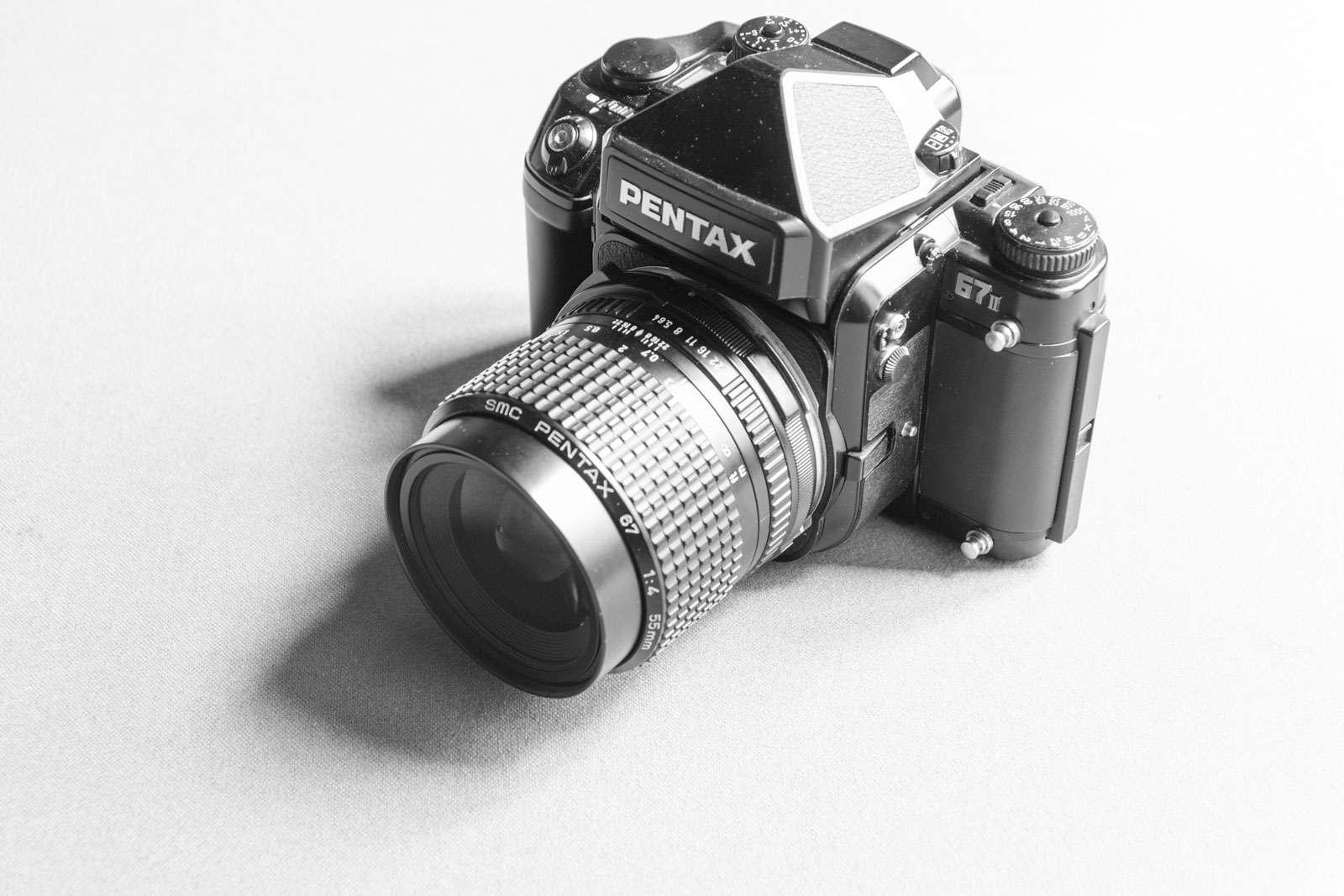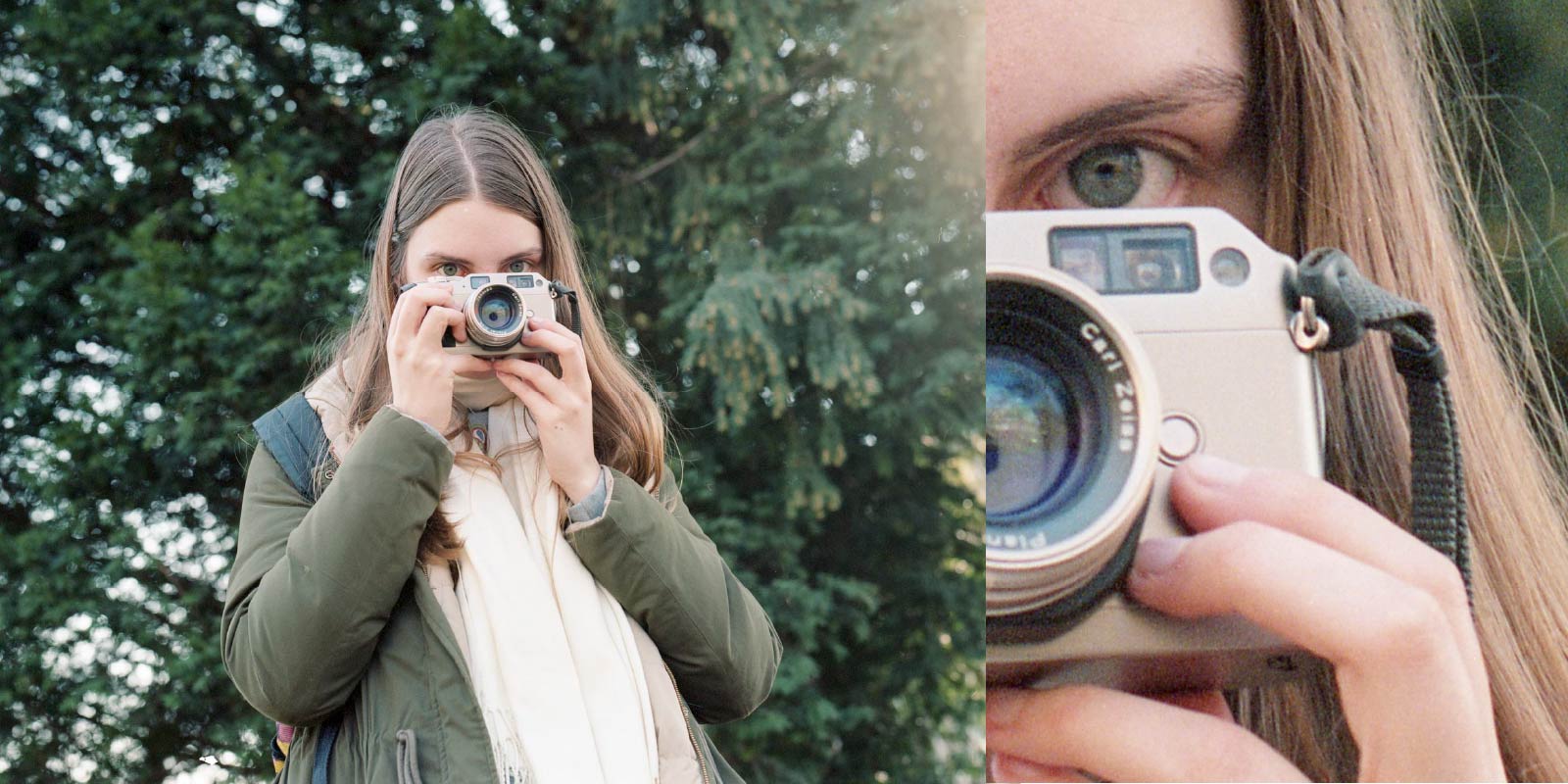TOC
In recent years we have witnessed an authentic resurrection of the 6x7 format. Not that this format, to be honest, ever went away. At the same time, the prices of some of its cameras have gone up more than any other system. This interest is justified, despite the increases in recent years, since the prices compared to the 90s are negligible. With less than $1500, it is now possible to build a kit that at the time was the prerogative only of renowned studios and established professionals. The first to bet on this system was the Japanese Pentax, producing devices from 1969 to 1998. After this date, the last model the <a href="http://www.ricoh-imaging.co.jp/english/products/filmcamera/medium/672/index.html" target="_blank" rel=“noopener noreferrer”>Pentax 67ii that we will see in this article was no longer mass-produced, but never officially ceased.
To better understand the philosophy behind these cameras we must consider the American market of the late 1960s. At the time the 35mm was relegated to birthday photos for hobbyists, for anything more important there was the optical bench. The 35mm format, so popular in Europe, had barely managed to establish itself among overseas photo reporters. Pentax, therefore, saw the possibility of selling something that was greater than 35mm to people accustomed to great image quality. It maintained the same proportions as the 8x10, since then renamed the ideal format by some anonymous marketing genius and translated it into a smaller body that recalled SLRs. The SLR form had just conquered the market, with the Nikon F having quickly supplanted rangefinders starting in the 1960s.

The 6x7 MLU with a newer 105mm
The first camera we’re going to look at is the 6x7 MLU. This is not exactly the very first version, as the mirror lock-up is present here. With such a generously sized mirror, this function is often essential, so I would never recommend buying a model without it. This camera, if used on a tripod for the highest quality, requires a total absence of vibrations. For the rest, the device retains some functions common to later models such as 1/1000 of a second, the same loading system of the film, the same bayonet, and an even slightly larger viewfinder.
The 67ii is just under 30 years younger and features many of the innovations we saw arriving with cameras from the 1990s. You can use the self-timer, Aperture priority mode, and the pentaprism metering as part of the standard equipment. The dimensions remain generous, but without major differences in weight, which is indeed identical if both mount the same prism. The viewfinder is smaller to view, but brighter, a very convenient trade-off in my case, but which must still be weighed. Furthermore, the strap can only be vertical, while the previous model allowed the shoulder strap to be mounted most traditionally. However, where the two cameras differ significantly is in the price, if the 6x7 MLU is easily found around 500, to buy the 67ii you need at least $1500. So does the upgrade make sense?

The 67ii with the superb last version of the 55mm
First of all, to answer we must consider the optical park. The lenses are universally compatible between the two cameras, and although the design remains similar for them over the years, the construction is obviously better in the newer models. However, you could buy more modern lenses (called “Pentax 67”) compared to the old Super Takumar or 6x7 and mount them on the new camera without problems. However, what the 67ii offers is the exposure pentaprism, both in matrix function and in spot function. Here too you could see how you could buy the previous model and get an external light meter. This is feasible, but it presents a difficulty: we are talking about a camera that with the lens weighs more than 2kg in the hands, it may not be easy to use an external light meter in addition to it. The Aperture priority mode is also very convenient, as it allows you to significantly speed up shutter speeds. However, this probably does not make it a perfect camera for photographing sports and moving objects, but at the same time, there are episodes of photographers from these fields who have used it successfully, although very long telephoto lenses are now very expensive. We are in fact used to considering this mode more common to 35mm cameras of the 90s, such as the lucky Nikon 100f and therefore to consider it useless on 6x7. When you have only 10 shots per roll, the speed of use seems useless, but in reality, it is there that you need even more: you do not want to further complicate each process and therefore each process that is speeded up is a unique opportunity to obtain better shots.
The choice between the two cameras finally narrows to the field of use. If you plan to buy it to keep it in the studio, there is no good reason to spend more than to buy a 6x7. If, on the other hand, you want to have a 360° camera, then you will need to upgrade to more recent models. The question I ask the reader, however, is this: does it make sense to invest in a camera and a beautiful, complete, but not very cheap system, such as the Pentax 6x7 system, and then just use it in the studio or on a tripod? Precisely on those systems where digital today offers valid alternative solutions, such as the Foveon or the digital medium format. These cameras have experienced a real renaissance because we are making them do what photographers could not - literally - afford four or five decades ago: take them with us everywhere and use them to blend the best of medium format quality with the portability of an SRL. This is the lesson that <a href="https://www.nytimes.com/2018/11/15/arts/design/diane-arbus-zwirner.html" target="_blank" rel=“noopener noreferrer”>Diane Arbus as a great user of the Pentax 6x7 leaves us, a valuable lesson to be collected.
Precisely for this reason, I finally chose to keep the 67ii. Both are very large cameras, but the lenses are so spectacular and the format so much to my taste that I want to exploit their potential to the fullest. At a fraction of the cost of 20 years ago, we can get our hands on a kit that will return spectacular images: it is up to us to use it to the fullest to unlock its potential, without the limitations that the very high cost would have imposed years ago. We are lucky that the arrival of digital has opened up these possibilities for analogic and it would be a shame not to take advantage of it.

The surreal quality of Pentax 6x7 system with Kodak Portra 400 at 100%